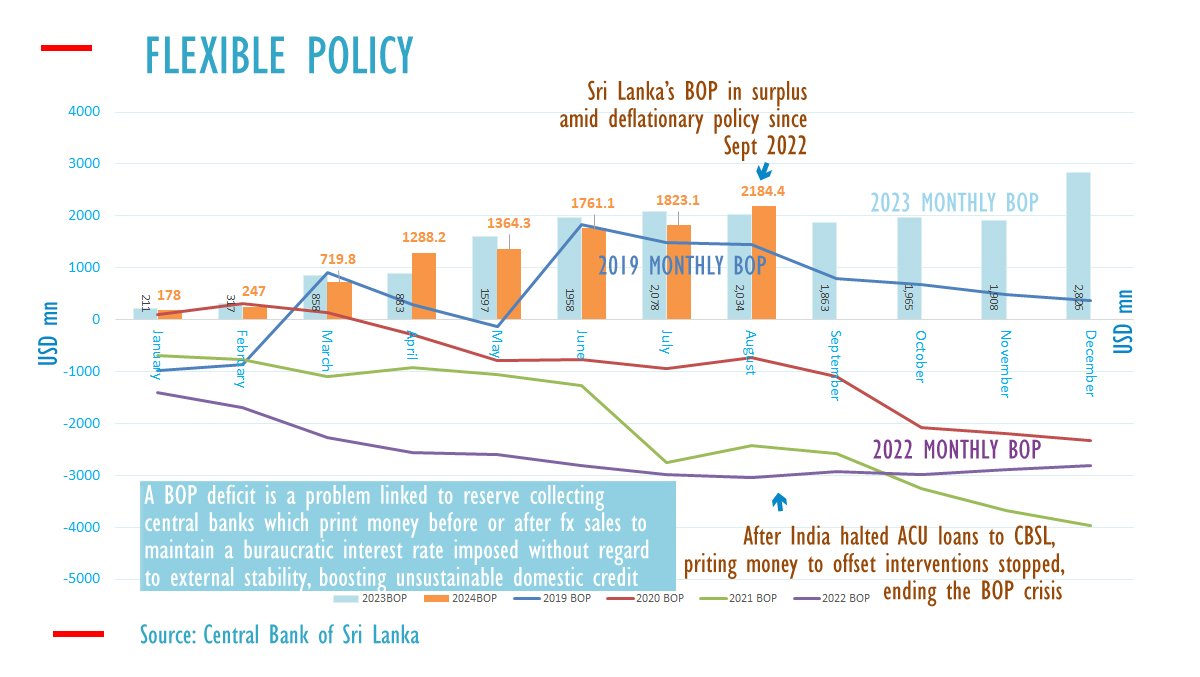
ECONOMYNEXT – Sri Lanka’s central bank has generated a 2,184 million dollar balance of payments surplus up to August 2024, running slightly ahead of last year, official data show.
The August BOP surplus was 361 million US dollars.
Sri Lanka’s central bank has allowed the exchange rate to appreciate amid deflationary policy since scrapping a surrender rule in 2024.
A pegged central bank has to run deflationary monetary policy (selling securities held by the agency to the banking system to curtail domestic credit from rupees generated through from dollar purchases) to generate a balance of payments surplus.
When a BOP surplus (every day or every week) is generated by the central bank it is easy to allow the exchange rate to appreciate by purchasing less than the excess dollars created by deflationary policy.
A central bank that conducts deflationary policy can either fix the exchange rate or allow it to appreciate. It can also depreciate by purchasing more dollars that the deflationary policy it creates.
The balance of payments is always in ‘balance’ and there is no actual surplus as reserves collected by the central bank is also invested abroad.
When rates are cut claiming that historical inflation in the past 12 months was low (flexible inflation targeting) and the mid-corridor or single policy rate is enforced by inflationary open market operation (domestic asset purchases) the BOP turns into deficit.
The central bank then sells its reserve and brings the proceeds to intervene in forex markets, which is referred to as a balance of payments deficit.
If money is repeated injected to keep rates down after the sale (the forex sales is sterilized) a balance of payments crisis develops until the rates are allowed to rise to slow domestic credit.
By engaging is swaps, a central bank is able to suppress rates by selling more reserves than it holds, suppressing its bureaucratic policy rate for a longer period.
In the last currency crisis, which ended in default, the central bank ran down its external assets position to a negative 4.6 billion dollars, using loans from the International Monetary Fund, Bangladesh and India to delay corrections in domestic banking credit.
Fortunately the People’s Bank of China stopped using its swap after gross foreign reserves fell below three months of imports, helping Sri Lanka avoid further balance of payments deficits.
The central banks net reserve position improved to a negative 335 million dollars by August 2024. (Colombo/Oct22/2024)
